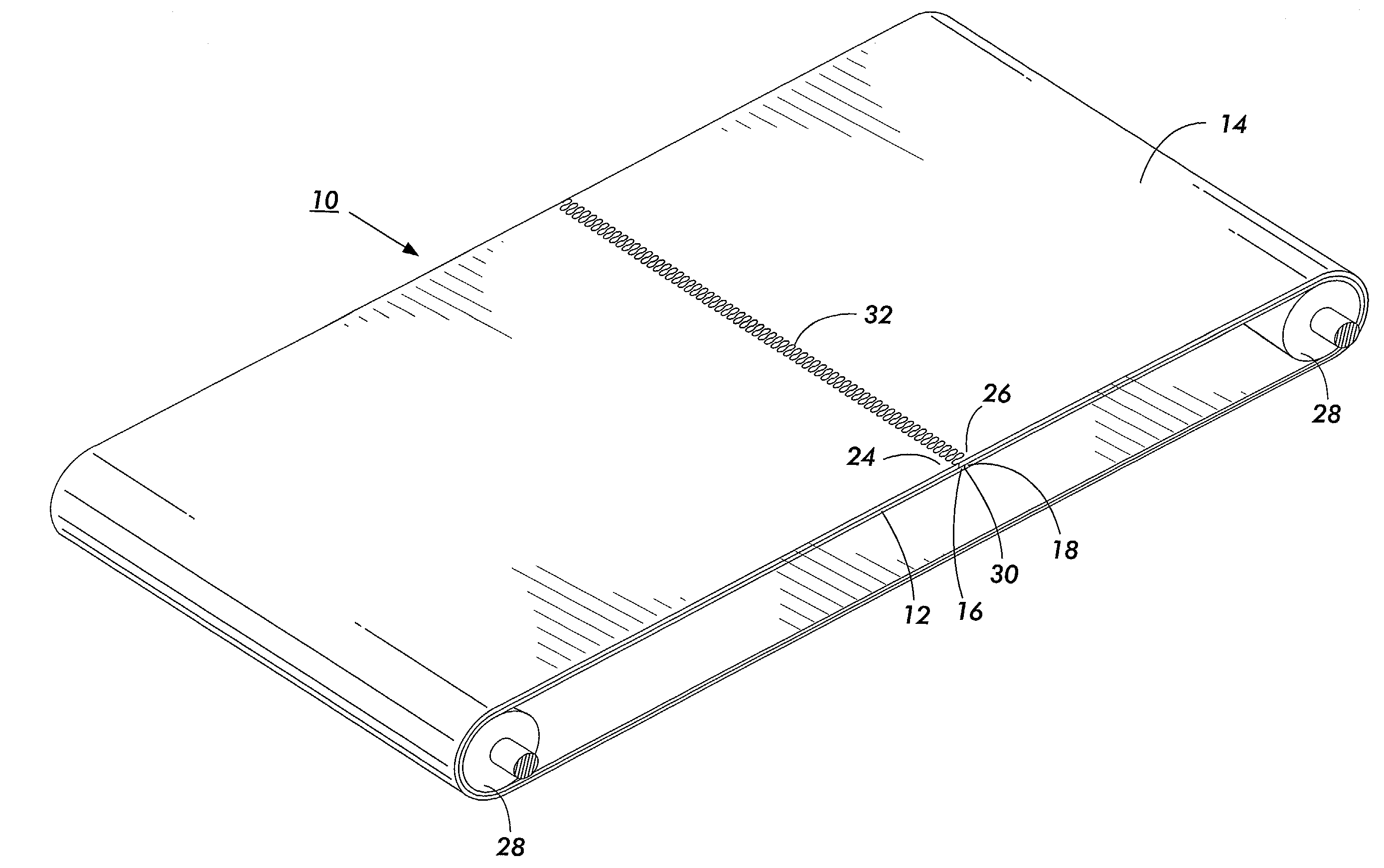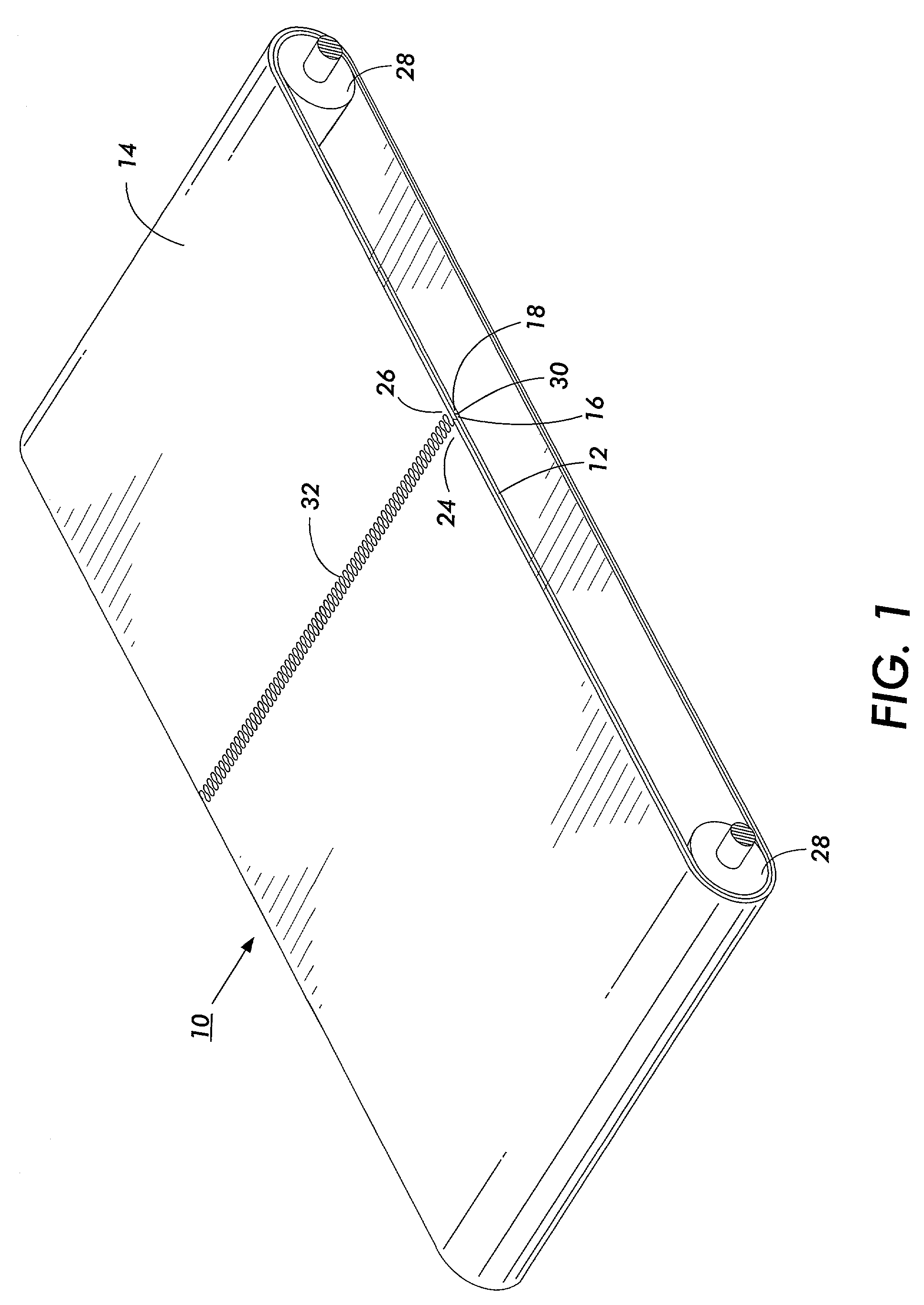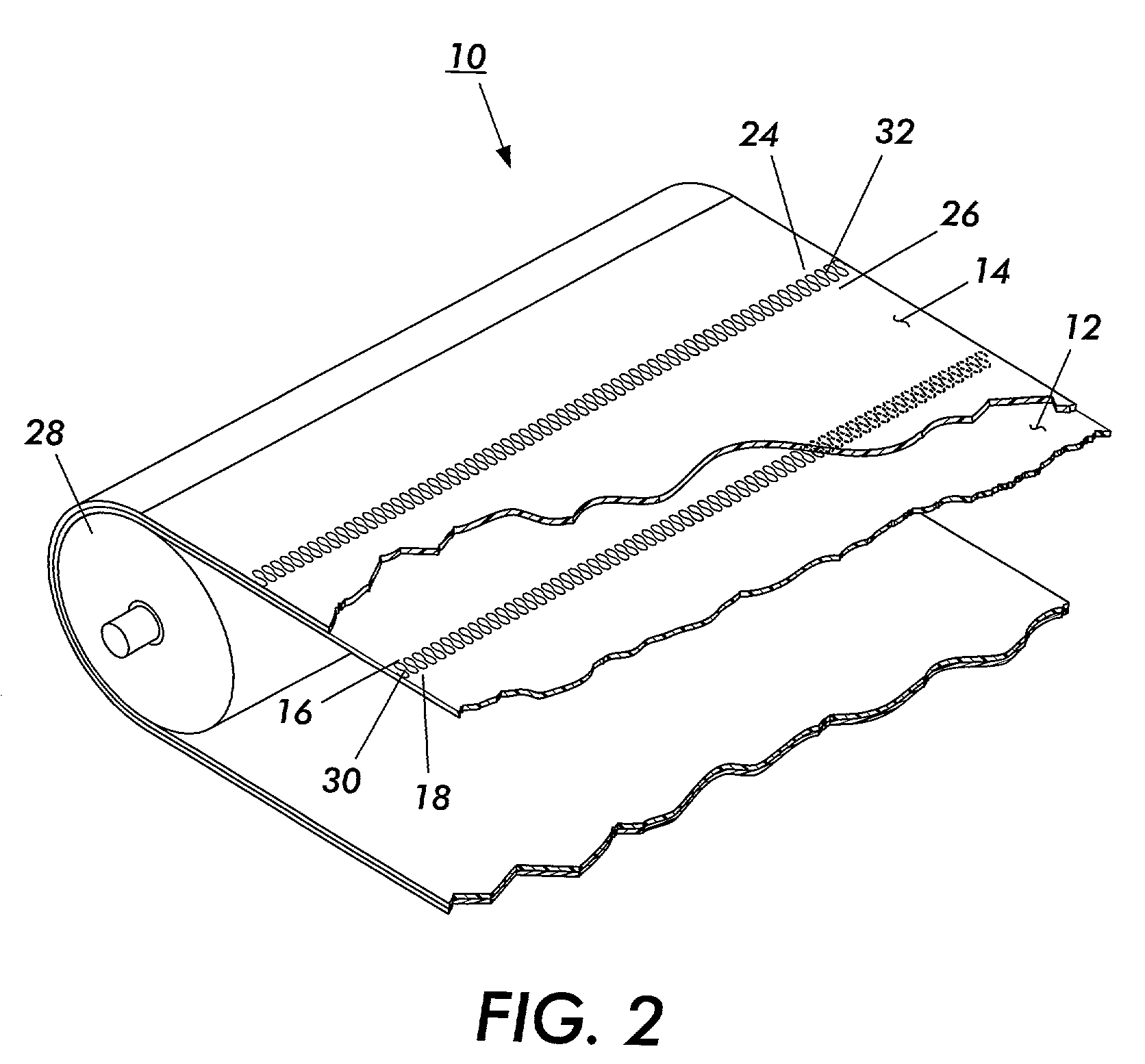Seamed, conformable belt and method of making
a technology of conformable belts and seamed, which is applied in the field of seamed, conformable belts and a method of making seamed, and conformable belts, can solve the problems of not being able to meet the requirements of many more sophisticated applications of belt technology in common practice today, the manufacturing process of seamless belts is rather complicated and expensive, and the manufacturing process of seamless belts is approximately 5–10 times more expensive than seamed belt fabrication. , to achieve the effect of eliminating the “bump
- Summary
- Abstract
- Description
- Claims
- Application Information
AI Technical Summary
Benefits of technology
Problems solved by technology
Method used
Image
Examples
second embodiment
[0047]While FIGS. 1–3 illustrate a two layer belt, the principles of the present invention can be used with belts having more layers. For example, additional elastomeric layers can be coated sequentially onto the first surface 20 of the substrate. Alternatively, in the present invention, additional elastomeric layers can be coated onto the second surface 22 of the substrate, as shown in FIG. 8. In this embodiment, the belt 10 further includes a lower elastomeric layer 44, which like elastomeric layer 14 will maintain its strength and other properties with repeated cycling under the desired conditions of use (e.g., high temperature).
[0048]The seamed, conformable belt 10 in accordance with the present invention may further include a reinforcement members on either or both sides of the belt. Suitable reinforcement members are known in the art and include tape and beads of elastomers.
third embodiment
[0049]Referring to FIGS. 9 and 10, a seamed, conformable belt in accordance with the present invention is shown. In this embodiment, the seamed conformable belt 10 is identical to the above-described seamed, conformable belt, except the first end 24 and the second end 26 of the elastomeric layer 14 are bonded together to form a second, bonded interlocking seam 32′.
[0050]As shown in FIG. 9, the first end 24 and the second end 26 may be bonded as described above, for example, using an adhesive which is compatible with the elastomeric layer and which exhibits similar properties to the elastomeric layer. In yet another embodiment, as shown in FIG. 9, a separate topcoat 48 for imaging purposes may be provided.
[0051]Alternatively, as shown in FIG. 10, the first end 24 and the second end 26 may be bonded through the use of a topcoat material 46 which may comprise an adhesive. The topcoats 46 and 48 may be applied using conventional processes, such as dip coating, flow coating, and spray co...
PUM
| Property | Measurement | Unit |
|---|---|---|
| Thickness | aaaaa | aaaaa |
| Thickness | aaaaa | aaaaa |
| Thickness | aaaaa | aaaaa |
Abstract
Description
Claims
Application Information
 Login to View More
Login to View More - R&D
- Intellectual Property
- Life Sciences
- Materials
- Tech Scout
- Unparalleled Data Quality
- Higher Quality Content
- 60% Fewer Hallucinations
Browse by: Latest US Patents, China's latest patents, Technical Efficacy Thesaurus, Application Domain, Technology Topic, Popular Technical Reports.
© 2025 PatSnap. All rights reserved.Legal|Privacy policy|Modern Slavery Act Transparency Statement|Sitemap|About US| Contact US: help@patsnap.com



